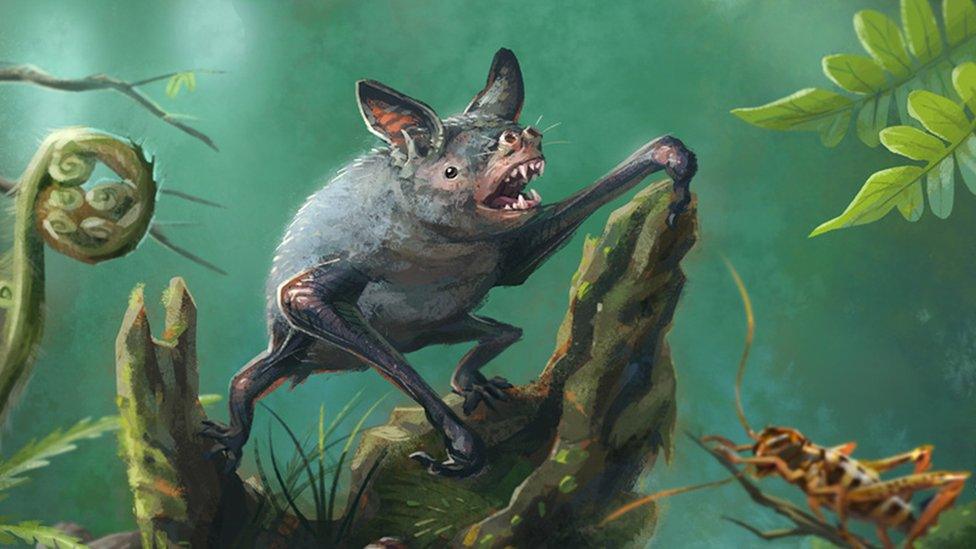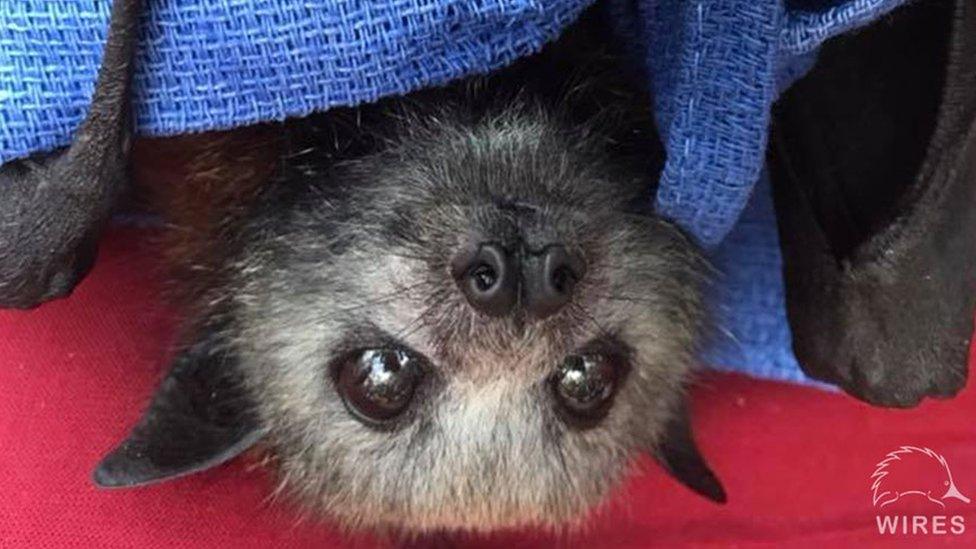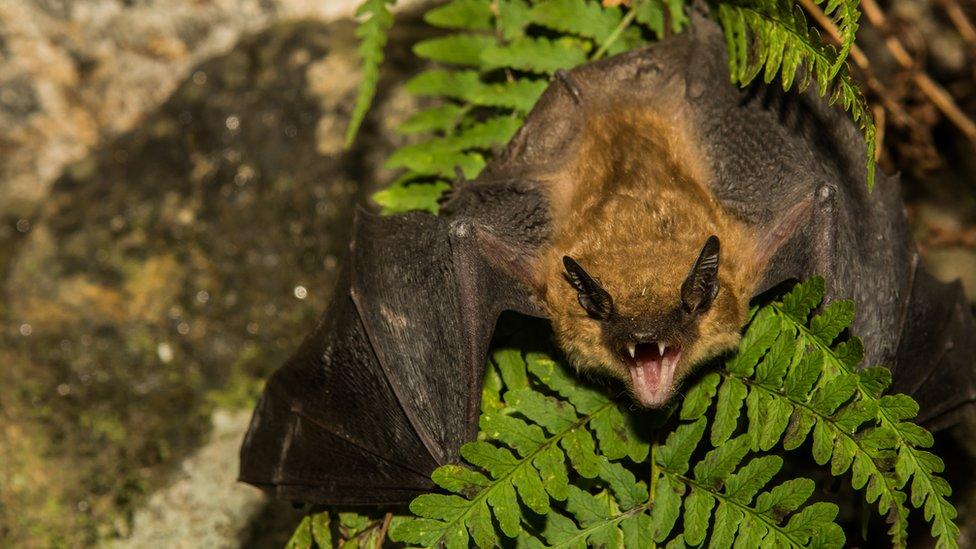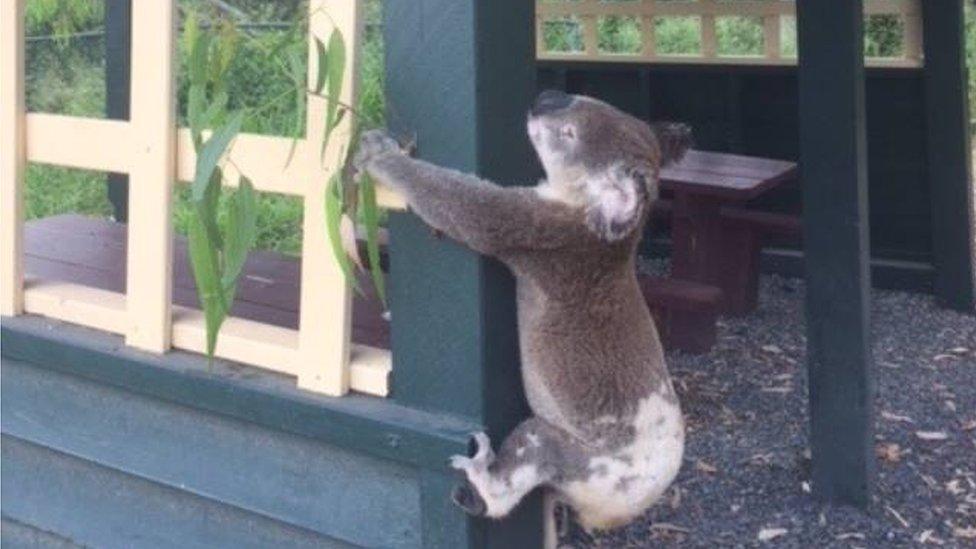Giant bat: Remains of extinct burrowing bat found in New Zealand
- Published

Scientists say the newly found bat resembled this other kind of extinct burrowing bat
The fossilised remains of a giant burrowing bat that lived in New Zealand millions of years ago have been found on the country's South Island.
The teeth and bones of the extinct bat were found to be three times the size of an average modern bat.
The bat, which weighed around 40g (1.41oz), not only flew but also scurried about on all fours looking for food.
The remains were recovered from ancient sediments near the town of St Bathans.
A team of international scientists made the discovery over the course of 15 years. Their findings were published in the Scientific Reports journal, external on Wednesday.

The fossilised remains were found at St Bathans
The bat has been named Vulcanops jennyworthyae after research team member Jenny Worthy who found the fossils, and Vulcan the mythological Roman god of fire and volcanoes.
The study suggested that the large size of the bat's teeth means it had a "different diet" to Australasian bats today.
"[Its] specialised teeth and large size suggest it had a different diet, capable of eating even more plant food as well as small vertebrates - more like some of its South American cousins," said study author Professor Sue Hand of the University of New South Wales.
"We don't see this in Australasian bats today," she said.
Burrowing bats are now only found in New Zealand, but once also lived in Australia.
This is the first new bat genus to be added to New Zealand's fauna in more than 150 years.
- Published9 January 2018

- Published27 November 2017

- Published6 September 2017

- Published11 January 2018
